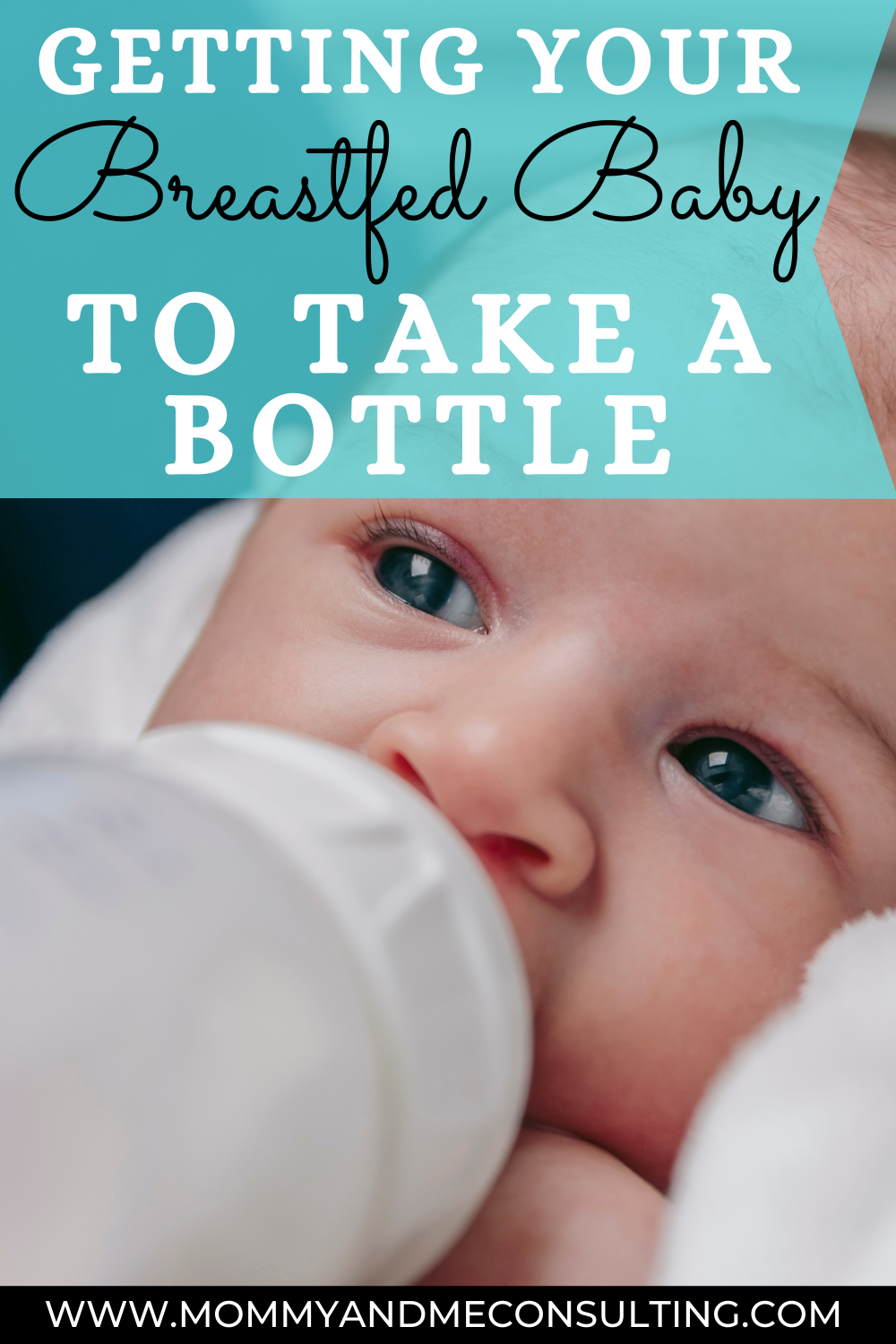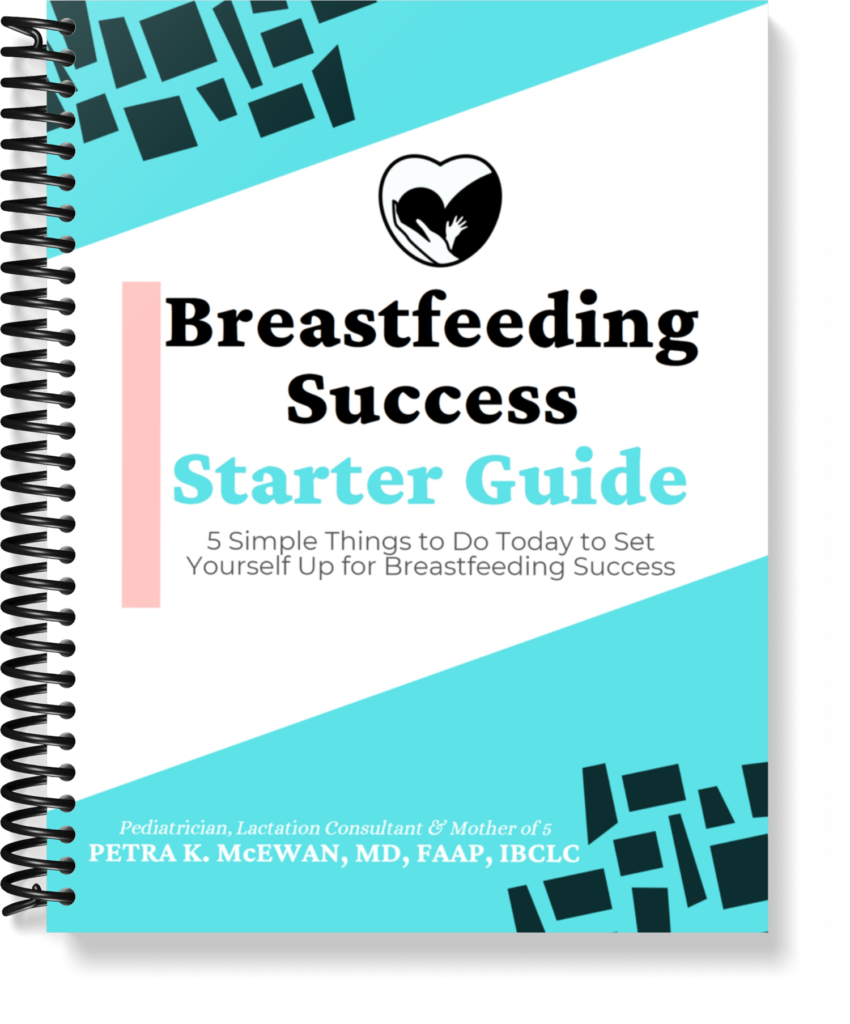Are you having a tough time bottle feeding your breastfed baby? Read on for tips on getting your breastfed baby to take a bottle.
During your breastfeeding journey, there may be times that your baby may need to take a bottle. Even if you are exclusively breastfeeding. You may be preparing to go back to work or school, or just want to have a night out with your husband or friends. If your baby is exclusively breastfeeding for some time, he may get so used to the breast that he has a hard time feeding from a bottle. He may even outright refuse it. Even if you’re offering breast milk in the bottle.
My bottle refuser
During my Pediatric Residency back in 2010, I gave birth to my 3rd child. I was off with her for a few weeks after delivery and was exclusively breastfeeding during that time. It was more convenient for me to directly nurse her, since I had 2 other children to take care of. Fitting pumping into my schedule was just tough. So, we waited until her first day at daycare to offer her a bottle, and it was a disaster. For at least 2 weeks, her daycare teachers struggled with getting her to take a bottle. Luckily, her daycare was at the hospital where I was working. But that meant I had to break away to feed her every 2-3 hours. Eventually, we found the right bottle and feeding position combination that worked for her. But it was a very long 2 weeks!
Why might you have to teach your breastfed baby to take a bottle?
There are a lot of differences between a breast nipple and bottle nipple, and most breastfed babies simply prefer the breast. A bottle nipple is firm and doesn’t change shape. The breast nipple is soft and flexible, getting longer during feedings. During feedings, a bottle nipple stays at the front of the baby’s mouth, while the breast nipple gets pulled to the back of the mouth with the baby’s tongue cupped around it. When a baby sucks on a bottle, the milk flows instantly and is fast throughout the feeding. But at the breast, milk does not flow until let-down happens (after a minute or two of sucking) and the flow is fast initially, then slows down. Breastfeeding sessions take longer than bottle feeding.
As you can see, feeding from the breast is a very different experience than feeding at the bottle. So, you may have to train your baby to switch from one to the other.
Tips on getting your breastfed baby to take a bottle
Don’t wait too long
Start introducing your baby to the bottle once breastfeeding is established. Ideally, once you and your baby are both comfortable with breastfeeding. This is usually after about 4-6 weeks. If you wait too long, your baby is more likely to refuse the bottle. Offer the bottle once a day. Be sure to pump whenever your baby is receiving a bottle to maintain your supply.
Have someone else give the bottle
Once your baby starts to recognize your smell and associates you with breastfeeding, it may be hard for you to offer any other form of feeding to him. He may know that the breast is close and will refuse the bottle until he gets it. Have someone else (like dad or grandparents) feed the baby from the bottle. It may help if you left the room, so he doesn’t hear or smell you.
Try different positions
It may take some time to find the best position to feed your baby from the bottle. Try feeding your baby (or having someone else feed him) in the same position that he is in while nursing. Or try propping him up facing you while feeding. Always maintain eye contact during feedings.
Get moving
Many breastfed babies will take a bottle as long as they’re distracted. Try standing and rocking while feeding or rocking back and forth in a rocking chair.
Be patient
Give your baby time to get used to the bottle with each feeding. Rub the outside of his mouth with the nipple and entice him to start feeding with drops of breast milk on his lower lip. Give him time to figure it out.
Adjust the temperature
Some babies may want stored breast milk warmed. Others may prefer it at room temperature or cooler. Try different temperatures until you find the one your baby prefers.
Try different nipples
A bottle nipple with a wide base and slow flow is ideal, since it mimics the shape of a breast. But, if your baby does not like this shape, you can offer different nipple shapes and materials. I found that a latex nipple worked the best for my stubborn little one. But try a variety until you find one your baby likes.
Offer a cup
Some breastfed babies will just outright refuse a bottle no matter how hard you try. If that’s the case for your little one, try cup-feeding instead. A medicine cup works well for this, or even a spoon. Put the rim of the cup to your baby’s bottom lip with the milk just at the rim of the cup. Encourage your baby to extend his tongue to sip the milk. Allow him to pace the feeding and avoid pouring the milk into his mouth.
Transitioning a breastfed baby to a bottle can be a tough process. Starting early (once breastfeeding is established) can make a difference, along with the other tips mentioned above. If you’ve been struggling to get your baby to bottle-feed, I hope these tips will make the transition a little easier for you.
Other helpful resources related to getting your breastfed baby to take a bottle:
Want to remember tips on getting your breastfed baby to take a bottle? Pin this, and share with your family and friends:

If you love these tips, be sure to check out my 75+ page digital library, filled with step-by-step instructions and the tools you need to learn the basics and adapt to life while breastfeeding, troubleshoot breastfeeding problems, go back to work while breastfeeding, wean – and so much more!





